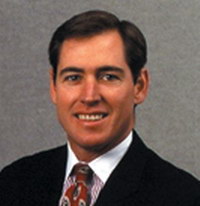Friday, September 26, 2008
Interview with Tim Harvey, XAware

XAware is a publisher of commercial, open-source data integration software that helps organizations pool data from multiple sources in order to create new applications and enterprise mashups. We recently had the chance to sit down with Tim Harvey, XAware's chief executive officer. Here's what the fast-talking Long Island native had to say.
You guys have been in business for a few years now, but your model seems to have changed. Could you tell us more about that?

Tim Harvey: The company was an enterprise software company that had 70-plus customers, including such marquee names as the New York Stock Exchange, ING, AXA—some big, Fortune 500-type companies. We made a decision in November of last year and announced an initiative to open source our product and, in March of this year, we made our software generally available on XAware.org.
In a relatively short time, we've had over 150,000 people from 70-plus countries download our product.
Why open source?
Tim Harvey: More and more, we see middleware infrastructure software being bought rather than sold, meaning customers want to evaluate the value for themselves without having to worry about making an upfront purchase or getting a big sales pitch. Open source really provides the opportunity for customers to download the software, try it, learn it, and judge on its own merits the value that it can provide or not provide.
We think it's a great business model. Customers are willing to pay for value, and open source allows them to use the software for no cost and then decide further down the road, when they go to implement, if they want things like guaranteed support or additional functionality on top of the open-source product.
The large majority of our customers, depending on the nature and the size of their projects, will never buy anything from us.
What is your acquisition rate?
Tim Harvey: What we've seen from other open-source companies and expect to see from our product is anywhere from one-tenth of 1 percent all the way up to 2 percent of the people who download it will eventually come back and buy some sort of service or support from us.
Tell us more about your product. What sort of databases does your application work with?
Tim Harvey: We're a standards-based product that works with almost any data source—almost any type of file format—whether it be a relational database, a structured database or anything.
An example would be one of our customers, Synovus, which has a new mobile banking payments application. They wanted to integrate that into three back-end legacy applications: a core deposits system that's written in COBOL, a relational database CRM application, and a third-party authentication app.
What we were able to do was extract data, transform and aggregate it, and then serve it up to this new mobile banking application. This was a project that was originally scheduled to take a year; they were able to complete in just under two months.
What does your software do with this data? What is the output?
Tim Harvey: What we do is create what's commonly referred to as composite data services or virtual data services layer that's represented in an XML file format that then can be served up, on demand, to any application.
Our product is basically made up of a design piece, which is an Eclipse-based plug-in, and then a run-time engine that works with almost any application server out there. And all of that is in Spring, which is a development framework.
Could you provide a before-and-after scenario of what a typical client is doing before implementing your solution versus what they're doing afterwards?
Tim Harvey: Here's what they're doing now: they're writing code. Most of the time, they're writing code, and it's spaghetti code—one data source to one application. And they're rewriting it every time they have to do it. So, from project to project, it may be a new project that they wanted to link to the old data sources and then to one new data source. Well, they start over from scratch because by the time the programmer looks at what the previous guy had done, in terms of writing the code, he might as well have done it himself.
What we provide is basically a configuration alternative to that code-based approach with our Eclipse-based design tool where people map data from the various data sources—we have connectors and adapters to almost every data source imaginable—and, using this configuration-not-code approach, aggregate or transform that data and then make it available, bi-directionally, to any data source. So this configuration-not-code approach allows people to very easily create these reusable composite or virtual data services.
So the key saving with your product is time?
Tim Harvey: Time and effort. In terms of productivity, especially on the first project, the time savings can be 10-to-1 with our product versus writing code. And that's not even counting the reuse from project to project, which gives you significant additional savings.
There's the Synovus example: a 12-month project that they were able to complete with the same head count in less than two. [We observed] similar results with AXA Canada: a project that was supposed to take 18 months, they were able to do it in eight weeks.
What is your funding status?
Tim Harvey: We're currently funded by vSpring Capital out of Salt Lake, Sequel Venture Partners out of Boulder, and GMT Capital, a large hedge fund out of Atlanta. We raised a $7.4 million round in January, but we're expecting to raise another round toward the end of this year or the first part of next year to continue to expand the growth of our community and scale our businesses.
What's your target for this latest funding?
Tim Harvey: We're looking for anywhere from $3-$7 million in additional capital, with the existing investors very excited and willing to participate and with the potential to bring one new investor in.